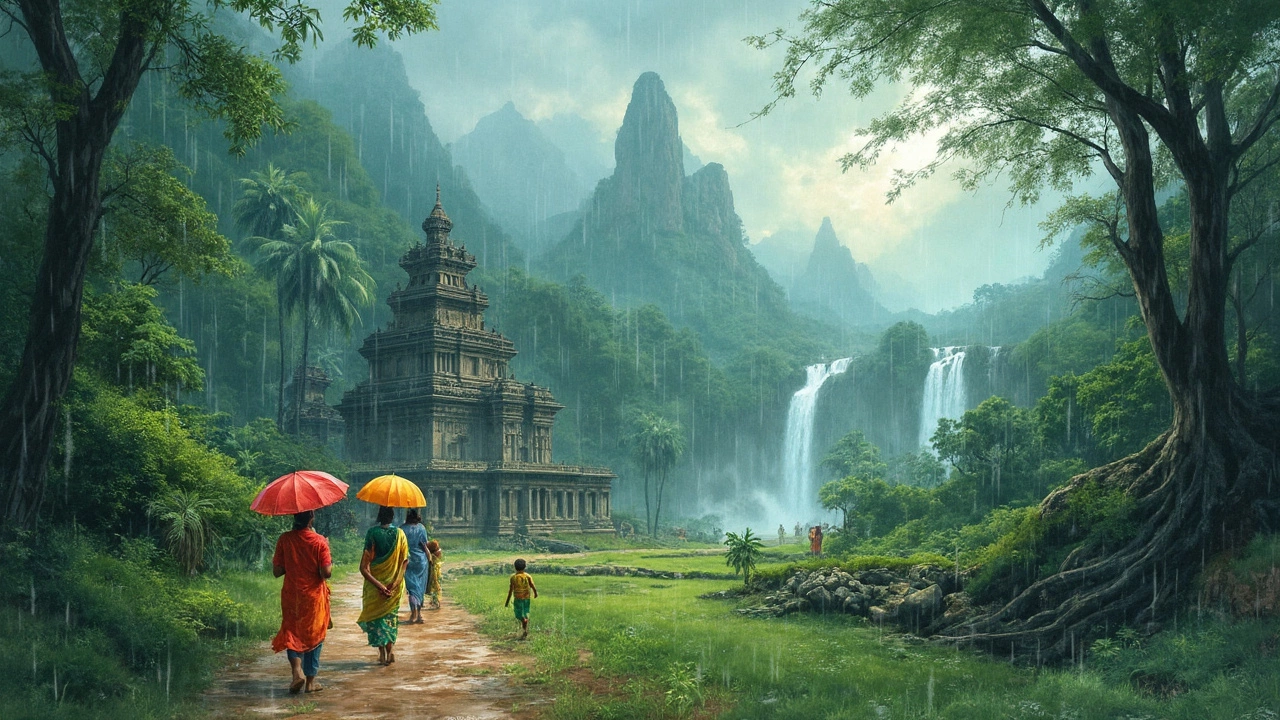Weather Guide for India: What to Expect Across Seasons and Regions
When you're planning a trip to India, a country with extreme climate diversity ranging from tropical coastlines to Himalayan snowfields. Also known as the Indian subcontinent, it doesn't have one single weather pattern—it has dozens, changing by region, altitude, and season. You can’t treat monsoon season in Kerala the same as winter in Ladakh. The monsoon, the annual rainy season that brings life to farmland and floods streets in cities hits different places at different times. In southern India, it arrives in early June; in the north, it’s late June or early July. And by October, it’s mostly gone—except in places like Chennai, where it rolls in again in November.
The Himalayan region, home to high-altitude treks and remote villages has its own rhythm. Summers (May–June) are mild and perfect for trekking, but monsoon rains make trails slippery and dangerous. Winters (December–February) are freezing, especially above 3,000 meters. If you’re heading to Roopkund or Kedarkantha, you need to know exactly when the snow melts and when the trails open. Meanwhile, cities like Delhi and Jaipur roast in May and June—temperatures regularly hit 45°C. That’s not just hot; it’s dangerous without proper planning.
Coastal areas like Goa and Kerala stay humid year-round, but the real difference is rainfall. Beaches in Goa are packed from November to February—dry, cool, and perfect. Come July, they’re quiet because of the downpours. And if you’re thinking about visiting the Andaman Islands, avoid the monsoon entirely. Ferries cancel, roads wash out, and you’ll be stuck indoors for days.
There’s no one-size-fits-all answer to "when’s the best time to visit India." It depends on what you want to do. Want to see the Taj Mahal? Go between October and March—clear skies, cool air. Planning a jungle camp in Ranthambore? November to February is ideal for wildlife spotting. Trying to hike the Great Himalayan Trail? Late spring or early autumn is your only window. The travel health, how your body handles heat, humidity, and sudden weather shifts also changes with the season. Monsoon brings mosquitoes, which means dengue and chikungunya risks. Winter brings dust storms in the north and cold-related illnesses.
What you’ll find below isn’t just a list of weather facts. It’s a practical collection of real traveler experiences—how Mumbai’s humidity ruined a weekend, why Nagpur’s dry winters are perfect for adventure sports, how Delhi’s air quality plummets after Diwali, and why beach lovers in Kerala swear by the post-monsoon months. These aren’t generic tips. They’re lessons learned from people who showed up unprepared and got soaked, stranded, or sick. You’ll see what to pack, when to book, and which months to avoid entirely. No fluff. Just what works.
